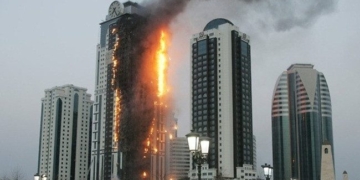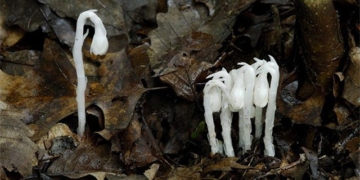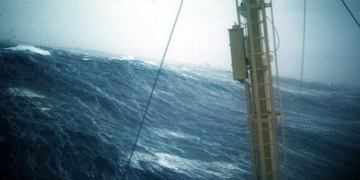A team of scientists from the Vietnam Academy of Aviation has developed a system that uses camera images and machine learning models to detect and warn about foreign objects that could pose safety risks at airports.
This image processing technology was developed by the research team over two years with the aim of enhancing aviation safety.
To implement this, the team created a 3D model on a computer that simulates a real airport, including the entire terminal, aircraft, runways, jet bridges, and lighting systems (simulating both day and night conditions). Additionally, cameras were installed along the runway to detect objects.
Various scenarios were constructed to enable the computer to identify foreign objects on the simulated runway. The data source was built from images collected at runway, taxiway, and parking positions at airports both domestically and internationally, combined with photos taken by students and faculty during practical training.
When this data is input into the computer, it learns to recognize all objects in the image set. For example, roofing sheets, water tank lids, antenna dishes, and various types of birds, as well as passenger items like pens, suitcase handles, and document clips, all pose potential safety risks. When a foreign object is introduced into the model runway, the camera captures the image, which is then sent to a server for analysis and processing, leading to a warning alert.
Testing on the machine learning model under well-lit conditions revealed it could accurately detect foreign objects over 99% of the time. However, in noisy image conditions, such as low light, dust, or rain, the model’s accuracy dropped to an average of about 70-80%. Overall, the machine learning model can identify the shape, size, and location of objects.
Currently, the team’s product only detects objects on the ground. Dr. Nguyen Thanh Dung indicated that research will continue to enhance and develop similar functions for airborne objects.
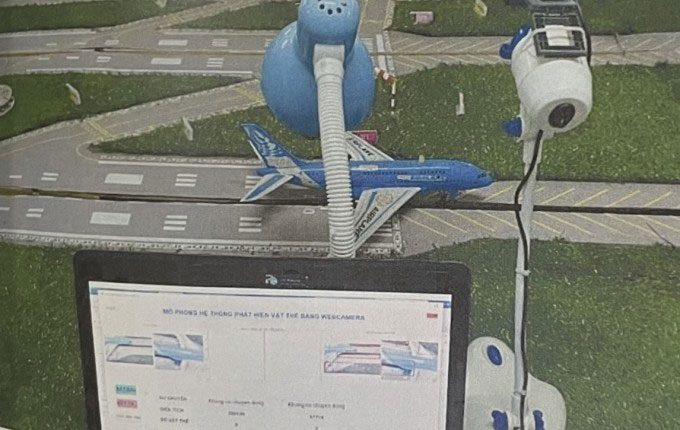
The machine learning model detecting foreign objects was tested on the airport model. (Photo: NVCC).
According to Dr. Nguyen Thanh Dung, Deputy Director of the Academy and head of the research project, testing the system on a model airport is very different from a real airport. The reason is that the distance from the camera position (which meets safety conditions) to the object (with a size greater than 3 cm) on the runway can be very large, sometimes reaching hundreds of meters. Therefore, the camera system requires higher resolution to accurately identify objects and needs a computer system with faster data processing capabilities.
Mr. Dung stated that the technology for detecting foreign objects in airports has been implemented in many countries and is quite expensive. In 2017, the total investment for the foreign object debris (FOD) detection and alert system was quoted at 486.2 billion VND for Noi Bai Airport and 509.7 billion VND for Tan Son Nhat Airport.
In Vietnam, “automatic foreign object detection systems have not yet been used; mostly manual methods are employed. That is, airports mobilize personnel to monitor and collect foreign objects from the runway, taxiway, and parking areas,” Dr. Dung noted.
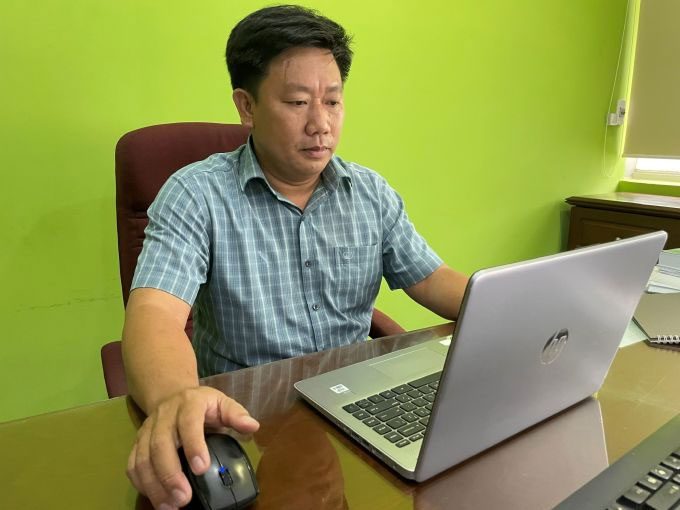
Dr. Nguyen Thanh Dung, head of the research project. Photo: Ha An
According to Associate Professor Dr. Bui Van Hong, Director of the Institute of Technical Pedagogy (Ho Chi Minh City University of Technical Education), foreign object detection systems in aviation that utilize camera systems have been researched and applied in developed countries worldwide. This technology is combined with short-wave radar systems at some airports globally to detect foreign objects. However, the effectiveness of these systems has not been extensively evaluated outside of manufacturers’ claims. Nonetheless, the high costs and lack of technology autonomy pose challenges for application in Vietnam.
He believes that the team’s research is a foundation for designing, installing, operating, and maintaining domestic technology, which could reduce costs if implemented practically. Therefore, he hopes that the system developed by the research team will be completed, prototyped, and applied at domestic airports.

















































